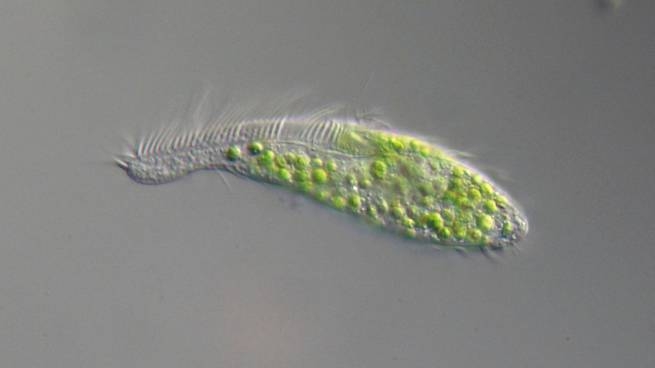Scientists from the University of Nebraska-Lincoln in the US have discovered a type of microbe that feeds exclusively on viruses.
Interesting research published at PNAS. As tells science alert, the microbe Halteria is a representative of freshwater plankton from the genus ciliates. His lab samples consume chloroviruses, deriving a significant amount of energy from them.
The three-year study was designed to clarify the coexistence in nature of microorganisms and viruses. There are a huge number of both in the water, so it is likely that one eats the other. There hasn’t been much previous research on this. Inside the viruses, as the scientists found, contained nucleic acids, amino acids, lipids, phosphorus and nitrogen, so it was considered likely that some organisms could feed on them.
The researchers collected samples from freshwater bodies and added chloroviruses to them. The goal was to test which organisms would perceive viruses not as a threat, but as food. The scientists found two species, Halteria and Paramecium, that remained in the water. Paramecium did not change much in size, but Halteria consumed the chlorovirus and used it as an energy source. After two days of studying this process, the population of Halteria microbes grew by about 15 times, while the population of the virus fell by 100 times. The researchers note:
“At first it was just a guess that there were more Halteria organisms. But then they were big enough to be picked up with a pipette tip, placed in a clean drop and counted.”
The researchers then labeled the chlorovirus DNA with a fluorescent dye before injecting it into plankton samples. Halteria and Paramecium did eat the viruses. Their vacuoles (the equivalent of a stomach) glowed green.
Scientists have found that the increase in the population of microbes and the decrease in the number of viruses is proportional, similar to that existing in any relationship between predator and prey. The next task for ecologists is to find out how this process occurs not in laboratory conditions, but in nature.
Reference. Halteria, sometimes called the jumping oligotrich, is a genus of common planktonic ciliates that are found in many freshwater environments. Galteries are easy to spot due to their abundance and peculiar behaviour. Observations of galtheria may date back to the 17th century and the discovery of microorganisms.







More Stories
Most polluted countries in 2023: Greek regions with worst air quality
Clearchos Marousakis warns of hail and tornadoes (video)
G. Kallianos: “24-hour bad weather with rain and downpours”